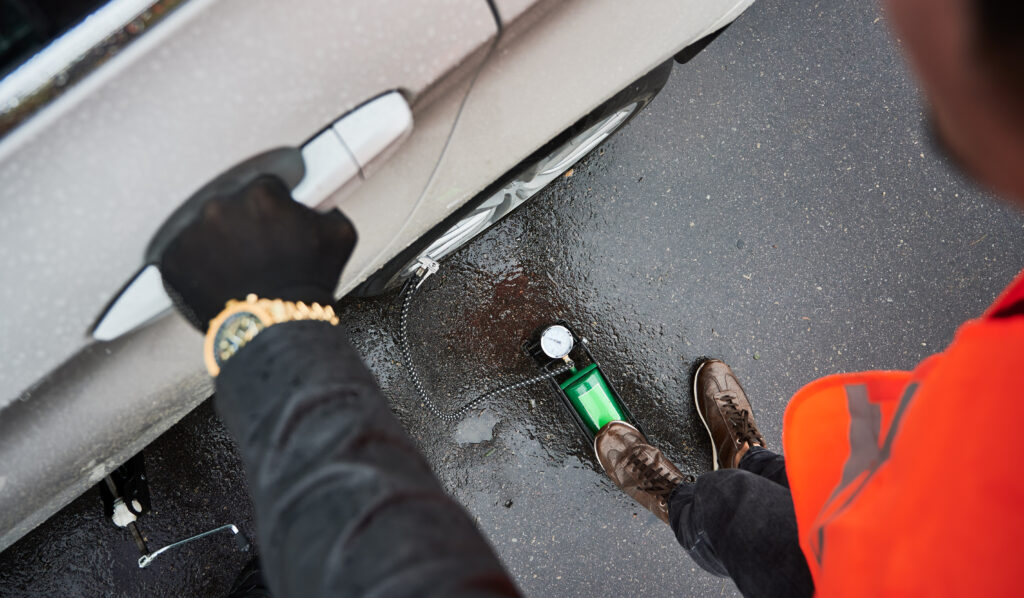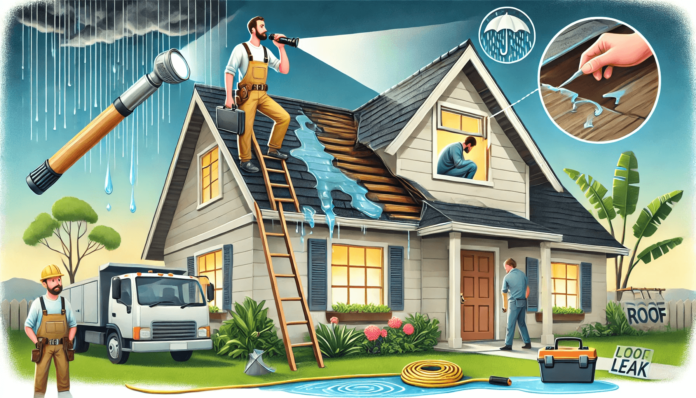Introduction
Proper roof leak detection is essential for keeping your home safe from water damage. Identifying and fixing roof leaks early can save you from costly repairs and prevent damage to your home’s structure. Whether it’s a small drip or a more significant problem, knowing the signs of a leak and how to address it can make all the difference. From checking for water stains and damaged shingles to using simple DIY methods, this guide will help you detect and fix roof leaks before they become a major issue.
Roof Leak Detection: Tips for Finding and Fixing Hidden Leaks

Effective roof leak detection is crucial for preventing water damage and maintaining the integrity of your home. Even a small, undetected leak can lead to mold growth, structural damage, and costly repairs if not addressed promptly. To identify leaks, start by inspecting your attic during or after rainfall—look for water stains, damp insulation, or moldy smells. Outside, check for missing or damaged shingles, cracked flashing, and clogged gutters, as these are common sources of leaks. If you suspect a leak but can’t pinpoint the location, try using a garden hose to simulate rain and observe where water might be seeping through. Early roof leak detection allows you to fix the problem before it escalates into a major issue.
Why Roof Leak Detection Is Important
Detecting roof leaks early can save you from major headaches down the line. When leaks go unnoticed, they can lead to structural damage, mold growth, and even compromise the integrity of your home’s foundation. Quick detection means you can make repairs before water damage spreads, saving you time and money. Regular checks can also extend the lifespan of your roof by preventing leaks from weakening the underlying structure.
Common Causes of Roof Leaks
Roof leaks can originate from various sources. Some of the most common include:
- Damaged or Missing Shingles: Harsh weather or aging can cause shingles to crack or go missing, leaving your roof vulnerable.
- Cracked or Deteriorated Flashing: Flashing around chimneys, vents, and skylights is crucial for sealing seams. When it becomes damaged, water can easily seep in.
- Clogged or Damaged Gutters: Blocked gutters can cause water to back up onto the roof, leading to leaks along the edges.
- Poorly Sealed Roof Vents or Skylights: Improper sealing around roof fixtures can allow rainwater to enter your home.
Signs of a Roof Leak Inside the Home
Some roof leaks manifest themselves inside your home before they are visible outside. Look for these warning signs:
- Water Stains on Ceilings and Walls: Brown or yellow stains are a common sign that water is seeping through your roof.
- Musty Odors or Mold Growth in the Attic: Moisture in the attic can lead to a musty smell or visible mold, indicating a leak.
- Dripping Sounds During Rainstorms: If you hear dripping when it rains, it’s a clear sign that water is entering where it shouldn’t.
- Peeling Paint or Wallpaper Near the Ceiling: Moisture can cause paint to bubble or peel, especially near windows or exterior walls.
Spotting Roof Leaks from the Outside
Regularly checking your roof from the outside can help you catch leaks early. Here’s what to look for:
- Inspecting for Missing or Damaged Shingles: Look for any missing, curled, or cracked shingles that could allow water to penetrate.
- Checking for Cracked Flashing Around Vents and Chimneys: Damaged flashing can create gaps where water can seep through.
- Identifying Sagging Areas or Puddles on a Flat Roof: Water pooling on a flat roof is a common sign of drainage problems.
- Examining Gutters and Downspouts for Blockages: Make sure water is flowing freely through gutters and downspouts to prevent backups.
DIY Methods for Roof Leak Detection
You can use a few simple methods to identify the source of a roof leak:
- Using a Garden Hose to Simulate Rain: Run water over suspected areas while someone checks inside for drips.
- Inspecting the Attic During Heavy Rainfall: A flashlight can help you spot where water might be coming in.
- Checking for Light Entering Through the Attic: If the light is coming through the roof, water can get in through the same gaps.
How to Fix Small Roof Leaks Yourself
If you’ve identified a small leak, you can often fix it yourself with the right materials:
- Materials Needed for Basic Roof Repairs: Gather items like roofing cement, patching material, and replacement shingles.
- Step-by-Step Guide to Sealing Small Cracks or Gaps: Clean the area, apply roofing cement, and cover the crack with a patch or new shingle.
- Replacing Damaged Shingles Safely: Lift the surrounding shingles, remove the damaged piece, and nail a new shingle into place.
When to Call a Professional for Roof Leaks
Some roof leaks are too complex to handle on your own. Consider hiring a professional if:
- Signs Indicate Major Leak or Structural Damage: Large puddles or widespread water stains suggest more serious issues.
- Benefits of Hiring a Professional Roofer for Complex Repairs: A professional has the tools and expertise to ensure a long-lasting fix.
- How to Choose a Qualified Roofing Contractor: Look for a contractor with good reviews, proper licensing, and experience with roof leak repairs.
Preventative Measures to Avoid Future Leaks
Keeping your roof in good condition can help prevent leaks before they start:
- Routine Roof Maintenance Tips: Regularly inspect your roof, clean gutters, and check for signs of wear.
- Importance of Clearing Gutters and Downspouts: Blocked gutters can cause water to back up onto your roof, leading to leaks.
- Seasonal Roof Inspections to Catch Early Signs of Wear: Inspecting your roof in spring and fall can help catch damage before extreme weather sets in.
Conclusion
Roof leak detection is crucial for maintaining the safety and integrity of your home. By identifying and addressing leaks early, you can prevent costly repairs and keep your roof in top condition. Whether you choose to DIY or hire a professional, regular inspections and proactive maintenance are key to a leak-free roof.














